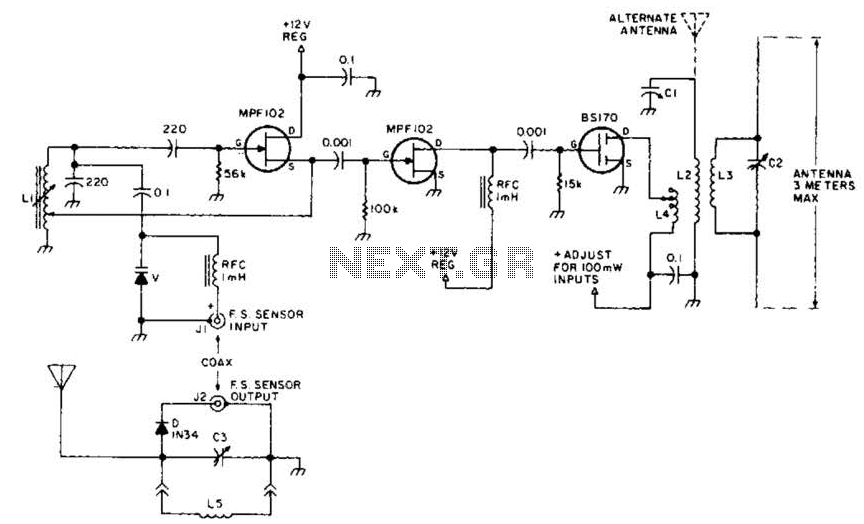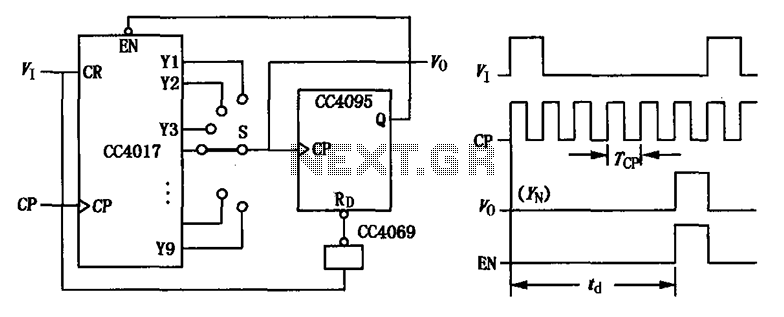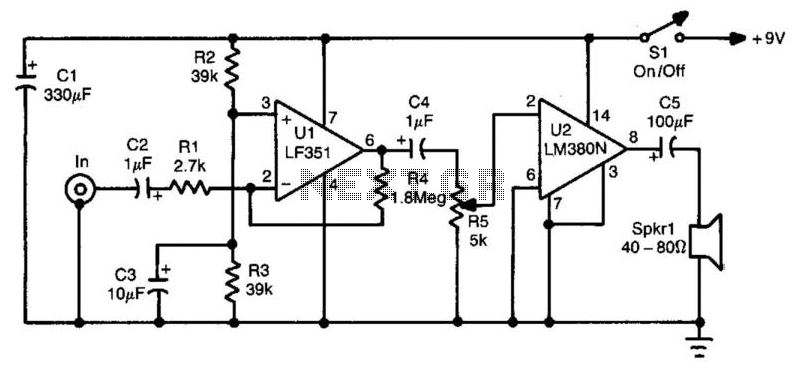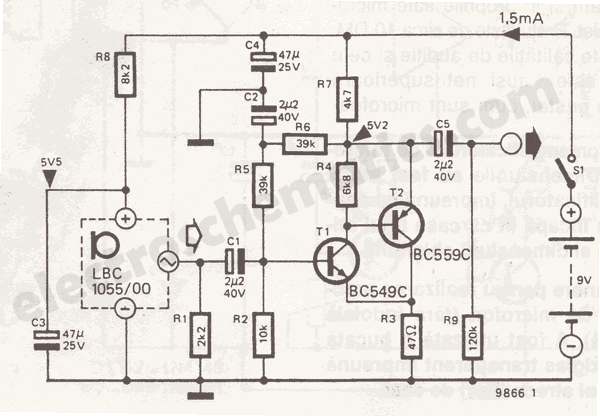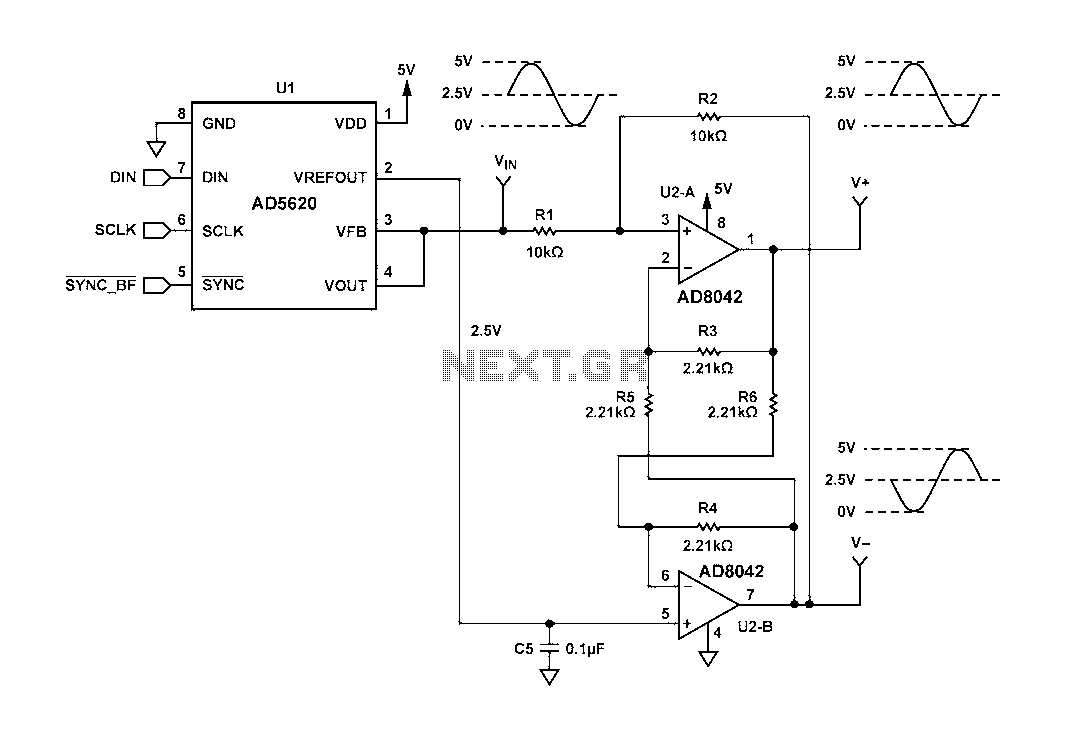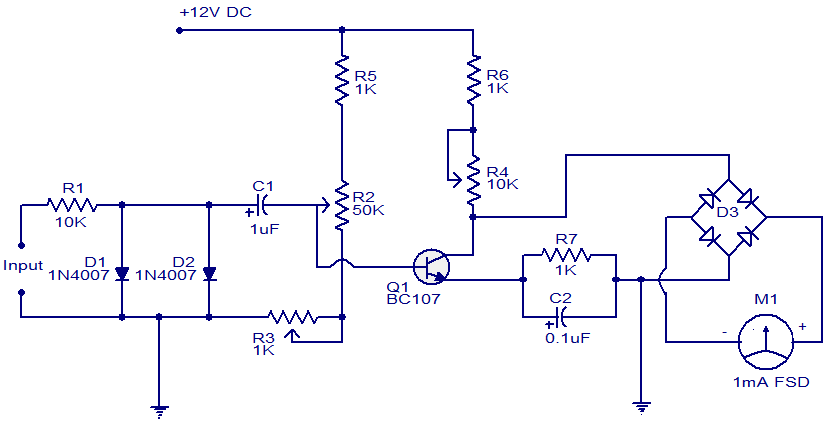
Automatic telephone answering circuit diagram
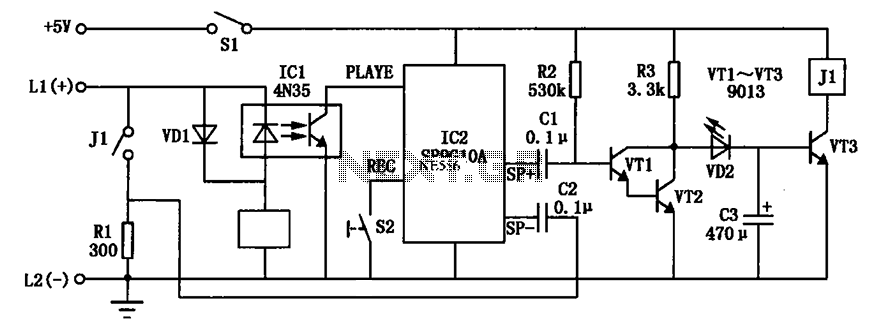
An automatic telephone responder circuit is illustrated. It incorporates a 10-second voice recording circuit (SR9G10A) activated by the power switch (S2). The circuit utilizes an electret microphone (IC2) for sound input. To initiate the response, the user must press switch (S1). The static triode (VT1) and composite pipe collector voltage (VCE) of transistor (VT2) are approximately 0.65V, while diode (VD2) and transistor (VT3) remain non-conductive. When a call is received, the ringing signal's negative half-cycle activates the optocoupler (IC1, 4N35), grounding the PLAYE of IC2, which triggers playback of the pre-recorded message. The audio signal is amplified through a composite tube, increasing the VCE of transistor (VT2), which activates VD2 and VT3, thus pulling the relay (J1) and simulating an off-hook condition on the telephone line (with a DC resistance of approximately 300 ohms). The audio signal is simultaneously sent through the telephone line, allowing the caller to hear the pre-recorded message. After the audio playback, the circuit resets, releasing relay (J1) and returning to a hang-up state.
The automatic telephone responder circuit is designed for seamless operation in response to incoming calls. The core components include an electret microphone for sound capture, a voice recording IC (SR9G10A) for storing the audio message, and a relay system to simulate an off-hook condition.
Upon receiving a call, the circuit employs an optocoupler (4N35) to detect the ringing signal. This detection is crucial as it triggers the playback of the recorded message stored in the voice recording IC. The audio signal is processed through a series of transistors, specifically VT1 and VT2, which modulate the voltage levels necessary for activating the relay (J1). The relay acts as a switch that connects the telephone line to the playback system, allowing the caller to hear the pre-recorded message.
The use of a static triode (VT1) ensures that the circuit remains inactive until a call is detected, minimizing power consumption. The voltage levels are carefully managed to ensure that the transistors operate efficiently, with the VCE of VT2 being a critical threshold for activating the relay. The diode (VD2) and transistor (VT3) configuration is essential for ensuring that the relay is only activated during the playback phase, preventing any unintended connections to the telephone line.
Once the message has been played, the circuit automatically resets, releasing the relay and returning to a standby state, ready for the next incoming call. This design provides an effective solution for automatic telephone responses, allowing users to communicate effectively even when they are unavailable to answer calls directly. The circuit can be further enhanced with additional features such as adjustable recording time, volume control, or integration with digital storage for improved message quality. Automatic telephone responder circuit is shown in Fig. FIG IC2 10 seconds voice recording circuit SR9G10A, press the power switch S2, can be built by IC2 electret microphone in put if you want to tell a friend. Before going out to press the switch Sl, static triode VTl, composite pipe collector voltage VCE VT2 composed of about 0.65V, diode VD2, transistor VT3 nonconductive.When a call hit, the phone ringing, ringing signal negative half-cycle so that ICl 4N35 optocoupler conduction, IC2 of PLAYE grounded (equivalent to a falling edge of the negative pulse trigger) while playback, the audio signal all the way to unilateral after the composite tube amplification, the transistor VT2 of VCE increases, VD2, VT3 turn, relay Jl pull, the resistance Rl analog outside line off-hook (telephone DC resistance of about 300 ); another unilateral way audio signals added to both ends of the telephone line, so your friends hear your voice input in advance. When the sound after sowing, the circuit back to the static relay J1 release, the entire state of the circuit corresponds to hang up.
The automatic telephone responder circuit is designed for seamless operation in response to incoming calls. The core components include an electret microphone for sound capture, a voice recording IC (SR9G10A) for storing the audio message, and a relay system to simulate an off-hook condition.
Upon receiving a call, the circuit employs an optocoupler (4N35) to detect the ringing signal. This detection is crucial as it triggers the playback of the recorded message stored in the voice recording IC. The audio signal is processed through a series of transistors, specifically VT1 and VT2, which modulate the voltage levels necessary for activating the relay (J1). The relay acts as a switch that connects the telephone line to the playback system, allowing the caller to hear the pre-recorded message.
The use of a static triode (VT1) ensures that the circuit remains inactive until a call is detected, minimizing power consumption. The voltage levels are carefully managed to ensure that the transistors operate efficiently, with the VCE of VT2 being a critical threshold for activating the relay. The diode (VD2) and transistor (VT3) configuration is essential for ensuring that the relay is only activated during the playback phase, preventing any unintended connections to the telephone line.
Once the message has been played, the circuit automatically resets, releasing the relay and returning to a standby state, ready for the next incoming call. This design provides an effective solution for automatic telephone responses, allowing users to communicate effectively even when they are unavailable to answer calls directly. The circuit can be further enhanced with additional features such as adjustable recording time, volume control, or integration with digital storage for improved message quality. Automatic telephone responder circuit is shown in Fig. FIG IC2 10 seconds voice recording circuit SR9G10A, press the power switch S2, can be built by IC2 electret microphone in put if you want to tell a friend. Before going out to press the switch Sl, static triode VTl, composite pipe collector voltage VCE VT2 composed of about 0.65V, diode VD2, transistor VT3 nonconductive.When a call hit, the phone ringing, ringing signal negative half-cycle so that ICl 4N35 optocoupler conduction, IC2 of PLAYE grounded (equivalent to a falling edge of the negative pulse trigger) while playback, the audio signal all the way to unilateral after the composite tube amplification, the transistor VT2 of VCE increases, VD2, VT3 turn, relay Jl pull, the resistance Rl analog outside line off-hook (telephone DC resistance of about 300 ); another unilateral way audio signals added to both ends of the telephone line, so your friends hear your voice input in advance. When the sound after sowing, the circuit back to the static relay J1 release, the entire state of the circuit corresponds to hang up.
